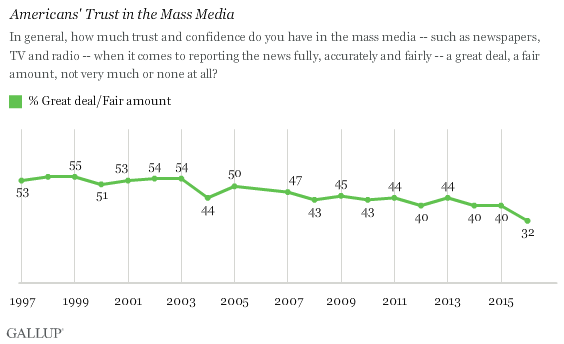Fixing Native Advertising: What Consumers Want From Brands, Publishers, and the FTC. As 2016 comes to an end, the media industry faces an uncertain future. Fake news has flooded Facebook, captivated the attention of people across the nation, and likely influenced a presidential election. A BuzzFeed report found that the top 20 fake news stories about the election were shared 1.4 million times more than the top 20 real news stories. While this huge disparity speaks to the nature of how Facebook presents content, it’s also indicative of a scary stat: Trust in mass media among Americans has plummeted to 32 percent, an all-time low. When Americans don’t trust verified news sources, they’re more likely to trust those that present a false narrative. This drop in trust has triggered a lot of self-examination within the media industry. But we still know relatively little about how consumers perceive native content, whether they identify it as advertising, and how it impacts publisher trust. 77 percent of respondents did not interpret native ads as advertising, 44 percent were not able to correctly identify the sponsor of the native ad they read. When a trusted publisher features native advertising for an untrustworthy brand, 43 percent of consumers lose trust in that publisher.
As 2016 comes to an end, the media industry faces an uncertain future.
Fake news has flooded Facebook, captivated the attention of people across the nation, and likely influenced a presidential election. A BuzzFeed report found that the top 20 fake news stories about the election were shared 1.4 million times more than the top 20 real news stories. While this huge disparity speaks to the nature of how Facebook presents content, it’s also indicative of a scary stat: Trust in mass media among Americans has plummeted to 32 percent, an all-time low. When Americans don’t trust verified news sources, they’re more likely to trust those that present a false narrative.

This drop in trust has triggered a lot of self-examination within the media industry. And when it comes to trust, it’s hard not to talk about the ramifications of native advertising.
Native advertising has become a crucial part of publishers’ business models. At companies like Slate, The…
COMMENTS